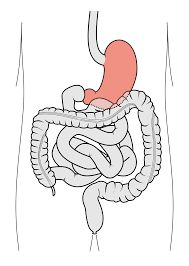A New Epidemic On the Rise - Doctor Burnouts
- Mahi Mahitcha

- Jun 10, 2022
- 2 min read
Medical professionals are known to be among the most dedicated workers in the market. From seeing patients to prescribing treatments, they undoubtedly sacrifice more than just their time in order to provide the best care possible for their communities.
However, in recent years, the epidemic of burnout amongst clinicians has spread widely, with many becoming dissatisfied with their occupation and planning to abandon the practice. Suffering from weakened memory and attention, as well as reduced work efficiency, a staggering 42% of physicians experienced burnout in the year of 2021, with the number expected to rise as yet another unforeseen toll from the COVID-19 pandemic.
The environment that they are accustomed to working in consists of long hours, demanding tasks, and time pressures on top of emotional severity, yet they are often expected to “push through” without a break or rest. This has been found to contribute to burnout over long and short term, as well as career regret, with only 1 in 10 doctors recommending a career in medicine.

Burned-out healthcare professionals are one thing, but what about their impact on patients? The primary effect of this is that access to consistent high-quality care can be jeopardized as physicians leave their jobs. However, physicians’ reactions to their work environments do not play into the effort put into providing quality care for patients: often, the organization that led to career burnout was also responsible for low quality treatment. Investigators interpreted this as doctors and nurses acting as “buffers” between their work environment and their patients, trying to help patients to the best of their ability - no matter the conditions they were working with.
What’s more, clinicians in certain specialties were found to have been more affected by burnout. Neurology, emergency medicine, and family medicine all had the highest burnout rates of almost 50%. In contrast, those happiest with their jobs worked in dermatology and ophthalmology.
Various surveys found that clinicians were most unhappy with their long work hours, little work-life balance, and lack of respect from patients and superiors. Additionally, the work culture in hospitals and other institutions was greatly affected by economic inequality and social justice issues, adding to workplace tensions that could later drive clinicians to burnout.
Moreover, a study conducted by the AHRQ (Agency for Healthcare Research and Quality) discovered that giving doctors more time with their patients, reducing the amount of visits per day, offering flexible schedules, and ensuring harmony between them and their leaders greatly improved satisfaction with the workplace, and reduced rates of reported burnout.
Though healthcare professionals can often perform miracles, it is important to remember that they are people, too, and should be treated as such.



Comments